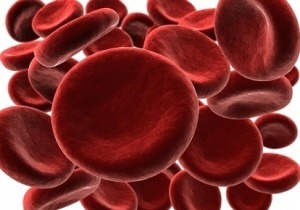Guidelines for the preparation and administration of blinatumomab infusions

Guidelines for the preparation and administration of blinatumomab in both inpatient and outpatient settings, as well as a standardized neurological nursing assessment, were developed to ensure safe and effective administration of blinatumomab” Szoch et al (2018). Abstract: Blinatumomab has shown great potential for patients with chemotherapy-resistant B-cell acute lymphocytic leukemia. Blinatumomab’s toxicity profile includes central […]
Complications and implications of therapy-related cardiotoxicity

The future holds promise with enhanced opportunities to use cardioprotectant drugs and biomarkers to prevent and detect early myocardial changes. Infusion therapy nurses must keep abreast of these developments to facilitate their roles as patient educators and advocates in the face of this toxicity’s prevalence” Boyle (2018). Abstract: The growing number of adult long-term cancer […]
Infusion phlebitis signs and symptoms associated with peripheral IV catheters

This study was undertaken to calculate the incidence of 8 signs and symptoms used for the diagnosis of phlebitis with peripheral intravenous catheters, or short peripheral catheters, and the level of correlation between them” Mihala et al (2018). Abstract: This study was undertaken to calculate the incidence of 8 signs and symptoms used for the […]
Using social media to diagnose Superior Vena Cava Syndrome

Here, we report a case of a patient who turned to social media when she had recurrent syncope and facial swelling” Charbonniez et al (2018). Abstract: Social media is becoming increasingly popular among the public. In 2017, Facebook had 2.2 Billion monthly active users [1]. Applications of social media in healthcare are growing. This includes […]
OPAT guidelines help with the economic burden of hospital admissions

Admissions for ABSSSI impose a substantial cost to US hospitals, with half of costs attributable to room costs. When extrapolated to all US patients admitted to the hospital for ABSSSI during 2014, had OPAT guidelines been universally followed, admissions may have been reduced by 14%, thereby saving US hospitals $161 million” Keyloun et al (2018). […]
Central veins dilation – Effect of lumbar elevation?

This study aimed to determine a more convenient patient position that can result in the largest central vein diameter” Gu et al (2018). Abstract: Background: Increasing the size of the central veins is required to increase the success rate of central line placement and decrease complication risk. Right-sided approach for the central veins, Valsalva maneuver, […]
Self-reported management of IV fluids in children with acute respiratory failure

We sought to describe current IV fluid management in pediatric acute respiratory distress syndrome” Hassinger and Valentine (2018). Abstract: OBJECTIVES: Observational studies have shown that fluid overload is independently associated with increased morbidity in critically ill children, especially with respiratory pathology. It is unknown if recent evidence has influenced clinical practice. We sought to describe […]
Children undergoing hemodialysis – Iranian mothers’ experiences

Nurses are the healthcare team members who most frequently interact with mothers of children undergoing hemodialysis. They are therefore positioned favorably to provide the information and emotional support needed by these mothers” Pourghaznein et al (2018). Abstract: Purpose: To describe Iranian mothers’ perspectives regarding hemodialysis for their children. Design and Methods: This qualitative study was […]
Late onset neurological deficit after failed PICC insertion

We describe a case of a pregnant woman who required parenteral nutrition and underwent an unsuccessful PICC insertion attempt resulting in arterial puncture, and who 34 days later presented with right upper limb paresthesia” Antunes et al (2018). Abstract: INTRODUCTION: Insertion of central catheters in peripheral vessels is a common procedure performed for a variety of […]
Removal and insertion of central venous catheters in cancer patients is associated with high symptom burden

To assess the symptom burden associated with CVC removal and insertion in cancer patients” Raad et al (2018). Abstract: OBJECTIVES: To assess the symptom burden associated with CVC removal and insertion in cancer patients. METHODS: We collected patient-reported symptom-burden outcomes for 60 consecutive cancer patients: 30 undergoing CVC removal and 30 undergoing CVC insertion. Cancer […]
Article describes the accurate and safe management of fluid balance

The physiology of fluid balance in humans should be understood and applied in clinical practice. Fluid balance, when managed accurately and safely, can prevent significant morbidity and mortality” Watson and Austin (2018). Abstract: The physiology of fluid balance in humans should be understood and applied in clinical practice. Fluid balance, when managed accurately and safely, […]
Article offers definitions and descriptions of osmolarity, osmolality, osmotic and oncotic pressure

This article first outlines definitions and descriptions of key terms that will be used in the discussions that follow, including osmolarity, osmolality, osmotic and oncotic pressure” Waterhouse and Farmery (2018). Abstract: This article first outlines definitions and descriptions of key terms that will be used in the discussions that follow, including osmolarity, osmolality, osmotic and […]
Outcomes associated with an infection control and prevention program in a Russian neuro-ICU

The implementation of an evidence-based IPC program in a middle-income country (Russia) was highly effective in HAI prevention with meaningful reductions in antibiotic resistance” Ershova et al (2018). Abstract: Background: The impact of infection prevention and control (IPC) programs in limited resource countries such as Russia are largely unknown due to a lack of reliable […]
Web-based multitiered surveillance system for predicting CLABSI

A computer-automated method of CLABSI detection can improve the validity of surveillance. A new web-based, multitiered surveillance system for predicting and reducing CLABSI is proposed” Noaman et al (2018). Abstract: Central-line-associated bloodstream infection (CLABSI) rates are a key quality metric for comparing hospital quality and safety. Manual surveillance systems for CLABSIs are time-consuming and often […]
Integration of robotic phlebotomy with downstream sample processing

This paper presents a medical device that enables end-to-end blood testing by performing blood draws and providing diagnostic results in a fully automated fashion at the point-of-care” Balter et al (2018). Abstract: Diagnostic blood testing is the most commonly performed clinical procedure in the world, and influences the majority of medical decisions made in hospital […]
Successful hemodialysis through persistent left superior vena cava

We hereby present a case of persistent left superior vena cava that was incidentally encountered after the placement of a hemodialysis catheter through the left internal jugular vein. This case highlights the pertinent radiologic findings and emphasizes the importance of familiarity to such an anatomic anomaly” Meena et al (2018). Abstract: Persistent left superior vena […]
Home infusion teaching practices at hemophilia treatment centers

Home management of hemophilia is standard of care in many countries. This study examined current nursing practices in teaching home infusion (HI) at hemophilia treatment centers (HTC) in the USA” Santaella et al (2018). Abstract BACKGROUND: Home management of hemophilia is standard of care in many countries. This study examined current nursing practices in teaching […]
How has the global hand hygiene improvement project progressed?

This represents a snapshot of the current position of global hand hygiene improvement efforts, outlining facility progress and highlighting the value of such an assessment tool” Kilpatrick et al (2018). Summary: The World Health Organization (WHO) has conducted two global surveys in 2011 and 2015 using the Hand Hygiene Self-Assessment Framework (HHSAF). In 2011, 2119 […]
Taurolidine lock is a cost-effective intervention in patients on HPN with high risk of CRBSI

Our study shows that taurolidine lock is a cost-effective intervention in patients on HPN with high risk of CRBSI” Arnoriaga Rodríguez et al (2018). Abstract: INTRODUCTION: catheter-related bloodstream infections (CRBSI) are one of the most serious concerns in patients on home parenteral nutrition (HPN) which involve high morbidity and cost for the healthcare system. In […]
Optimizing the electronic health record in the parenteral nutrition workflow

Surveys have shown that current electronic health record (EHR) systems are in need of functionality enhancement for safe and optimal delivery of PN” Vanek et al (2018). Abstract: Parenteral nutrition (PN) is a complex therapeutic modality provided to neonates, children, and adults for various indications. Surveys have shown that current electronic health record (EHR) systems […]
What is the effect of increased flow rate on intravenous fluid warming?

The efficacy of fluid warming was inversely associated with the increase in flow rate” Thongsukh et al (2018). Abstract: INTRODUCTION: In patients who require a massive intraoperative transfusion, cold fluid or blood transfusion can cause hypothermia and potential adverse effects. One method by which to prevent hypothermia in these patients is to warm the intravenous […]
Efficacy of the Buzzy System for pain relief during venipuncture in children

The Buzzy System combined to distraction cards showed a greater reduction of perceived pain than “magic glove” technique” Susam et al (2018). Abstract: BACKGROUND AND AIM OF THE WORK: procedural pain is a significant issue for paediatric patients. In particular, needle pain is amongst the most stressful for children. Studies revealed that a large number […]
Perfused cadaver model for trauma training in the out-of-hospital setting

We endeavor to describe a transportable central-perfused cadaver model suitable for training in the battlefield environment. Goals of design were to create a simple, easily reproducible, and realistic model to simulate procedures in field and austere conditions”Redman and Ross (2018). Abstract: BACKGROUND: Cadaver training for prehospital surgical procedures is a valid training model. The limitation […]
Seroconversion after needlestick injuries in Germany

The injuries occurred most often during waste disposal and high-risk procedures such as taking blood samples. The injuries were most often caused by cannulas for intravenous puncture” Dulon et al (2018). Abstract: Objective: After a needlestick injury (NSI) with contaminated blood, there is a risk of seroconversion. Statutory accident insurance (SAI) claims data were used […]
Exposure to biological agents result from injuries caused by needles

In Italy, about 70-80% of all cases of exposure to biological agents result from injuries caused by needles or other sharp instruments used during healthcare procedures” Triassi and Pennino (2018). Abstract: Exposure to pathogenic agents is a major occupational risk factor in healthcare facilities. The most common pathogenic agents are human immunodeficiency virus, hepatitis B […]
Best dressing and securement for the prevention of peripheral intravenous catheter failure?

Two billion peripheral intravenous catheters (PIVCs) are used globally each year, but optimal dressing and securement methods are not well established. We aimed to compare the efficacy and costs of three alternative approaches to standard non-bordered polyurethane dressings” Rickard et al (2018). Abstract: BACKGROUND: Two billion peripheral intravenous catheters (PIVCs) are used globally each year, […]
External or internal jugular vein for tunneled central line insertion in children?

The aim of this study is to compare the outcomes of external jugular vein (EJV) and internal jugular vein (IJV) tunneled catheters inserted using the open technique” Alshafei et al (2018). Abstract: BACKGROUND/PURPOSE: Tunneled central venous catheters (TCVCs) are commonly used to manage pediatric patients with chronic disease. The aim of this study is to […]
Heparin versus 0.9% sodium chloride locking for prevention of IV occlusion?

This review looks at the effectiveness and safety of intermittent locking with heparin compared to 0.9% NaCl to see if the evidence establishes whether one is better than the other. This work is an update of a review first published in 2014″ López-Briz et al (2018). Abstract: BACKGROUND: Intermittent locking of central venous catheters (CVCs) […]
Central venous catheter position confirmation by point of care ultrasound

We hypothesize that a knowledge translation gap exists in this area. We aim to describe the current clinical practice regarding POCUS alone for CVC position confirmation and pneumothorax exclusion as compared to chest radiography” Ablordeppey et al (2018). Abstract: PURPOSE: Although routine chest radiographs (CXR) to verify correct central venous catheter (CVC) position and exclude […]
National CLABSI surveillance data in paediatric patients

The broad objective of this study was to establish national benchmark data around rates of CLABSI in neonatal and paediatric intensive care units (NICUs and PICUs) and paediatric oncology units (ONCs)” Kouni et al (2018). Abstract: BACKGROUND: Healthcare-associated infections (HAIs) are associated with increased morbidity and mortality and with excess costs. Central line-associated bloodstream infections […]

